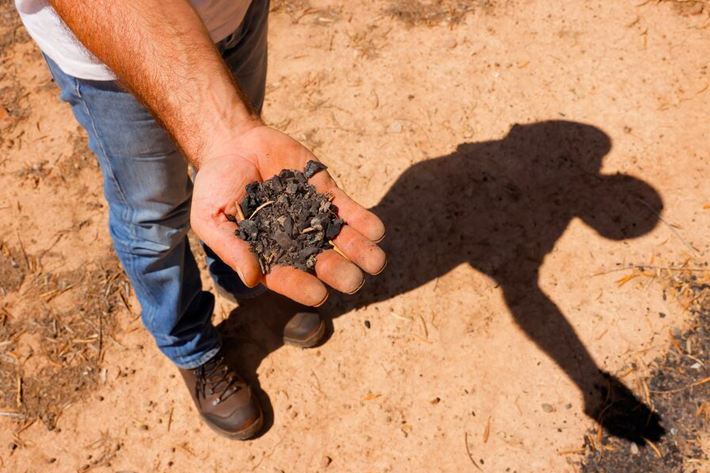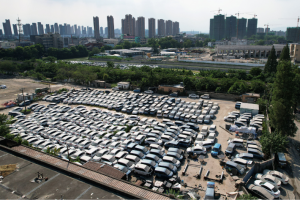India’s push to halve its carbon emissions by the end of the decade is set to get help from European specialists in carbon removal – a technology yet to gain ground in the world’s most populous country.
On Tuesday, an Amsterdam-based group called Remove launched an initiative to support Indian start-ups working on carbon dioxide removal (CDR), through a network of experts, international buyers and even potential funding.
CDR refers to a wide range of interventions that sequester CO2 that has already been emitted. It includes reforestation and filters that extract carbon directly from the air.
Also on AF: India ‘Asks Utilities to Order $33bn in Gear to Lift Coal Output’
Indian projects are expected to focus on biochar — charcoal produced from burning organic matter in an oxygen-limited environment. Biochar is one of the most widely used CDR methods as it effectively prevents the carbon dioxide in the organic matter from seeping into the atmosphere.
Projects in India will also focus on “enhanced weathering”, where materials like basalt are spread across land to absorb CO2.
The Carbon Removal India Alliance (CRIA) will be Remove’s partner in the initiative. Previously, Remove has raised more than $238 million (220 million euros) to support carbon dioxide removal (CDR) projects throughout Europe.
Big gaps, huge potential
India has taken several steps in recent years to meet its decarbonisation goals, including heavy investment in solar power generation, policy initiatives to encourage solar adoption, pushing to advance research in Carbon Capture, Utilisation and Storage (CCUS) and even outlining plans to roll out a Carbon Credit Trading Scheme by 2026.
Last year, a top official at the International Renewable Energy Agency (IRENA) said India could hit its net zero target “well ahead” of its planned deadline of 2070.
But carbon removal — which researchers say is essential to achieve net negative CO2 emissions — is yet to gain ground in India.
The Indian government, so far, has done “limited research into specific CDR approaches”, according to CRIA.
A potential reason behind that is an outsized focus on CCUS to combat emissions from the country’s power sector, which continues to rely on coal to meet record electricity demand. Carbon capture technologies are aimed at capturing CO2 at key emission sources like industrial sites or power plants that run on fossil fuels.
Indian officials are also working to bring about a “green shift” in its massive oil and gas sector, and CCUS remains the key strategy to bring about their decarbonisation.
But India has the potential to meet 10 to 30% of global durable carbon removal demand, as per CRIA estimates.
The country can also potentially earn $90 billion annually from selling carbon credits from CDR, along with creating jobs in the carbon removal sector, improving agricultural yields and reducing air pollution, according to the organisation.
Governments must step up
A key challenge for the global CDR industry currently is a lack of scale.
Around 7-9 billion metric tons of CO2 need to be removed annually to keep temperature rises below the key 1.5 degree Celsius threshold, researchers have said. But current levels of carbon removal are stuck around just 2 billion tons.
“We are going to need this to become far more mainstream than it currently is,” Steve Smith, a CDR expert at Oxford University, told Reuters.
“I think that is going to have to involve governments stepping in to create the conditions for it to become mainstream.”
Meanwhile, industrial adoption of the technology remains constrained as CDR projects are more expensive than conventional CO2 reduction, and their viability depends on carbon markets.
Global demand for CDR credits is currently limited to a few dozen mainly philanthropic buyers on the voluntary market, including the US federal government, Microsoft and Google.
“We all know we will need carbon removal down the line – the pot of gold at the end is very big,” Marian Krueger, Remove’s co-founder said.
“But right now… it really is a matter of survival until we finally hit the point where the market finally materialises.”
- Vishakha Saxena, with Reuters
Also read:
Carbon Removal Could Rake in $100 Billion Annually From 2030
India Solar Output Slowest in 6 Years Amid Scorching Heatwave
India’s Surging Economy at Risk From Severe Water Shortages
India, China Pushing For ‘Multiple Pathways’ to Net Zero
Cost of Carbon Capture by 2050 May be Double Estimates – IME
US Startup, Singapore to Build an Ocean Carbon Removal Plant
Scientists Build Carbon-Consuming Electricity Generator – ABC
























